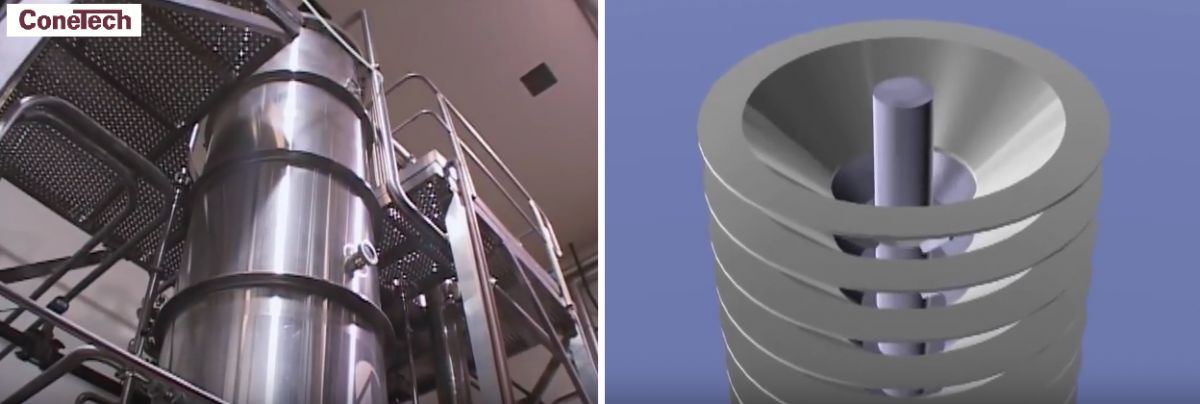A physical process used in distillation and rectification (separation of liquid mixtures). The liquid to be separated is distributed very thinly by rotating conical discs in conjunction with a vacuum using centrifugal force. A video (click to view) from the Californian manufacturer ConeTech clearly demonstrates the process.

Application in winemaking
The process, which has long been used in beer production, is also used in winemaking, particularly in the USA. It is used for the production of dealcoholised or low-alcohol wine through alcohol reduction, concentrated grape must and RCGM, for the optimisation of aroma and sensory properties, as well as for the reduction of excessive sulphurous acid content. The wine is broken down into fractions. A fraction is a group of substances with the same or a similar boiling point. These can be water, alcohol and various flavour groups. The wine (or liquid) is heated under vacuum, which allows for relatively low temperatures.
Due to the different boiling points of the individual fractions, these can be separated (at different times). Individual fractions are then added again and any undesirable ones are omitted, resulting in a different flavour profile in terms of alcohol content and aromas or relative density. For example, a common application in Australia is to achieve an "optimum gradation"(sweet spot) by removing alcohol. Spinning cone columns can be used to fractionate aroma groups (groups of substances), but not individual aromas (there are many hundreds in wine). It is therefore not possible to eliminate wine faults by specifically eliminating the substances that cause them.
Controversial process
Compared to conventional processes such as distillation, much smaller quantities of the original product are vaporised. This preserves the aroma and flavour, which would be altered or lost at high temperatures. In most cases, only part of the wine is treated in this way and then mixed with the rest after the extracted substances have been added. To exaggerate, the end product could be described as a "cuvée of itself".
The question is whether it is possible to produce a wine with the desired flavour in the same quality regardless of the vintage. Such wines tend to be disparagingly referred to as "column wines" or Coca-Cola wines. The process is therefore not without controversy. In 2005, the EU-US wine trade agreement came into force. Its use is severely restricted for EU countries (e.g. permitted for alcohol reduction), but wines treated in this way from the USA may be marketed in the EU. The similar process of electrodialysis, on the other hand, is permitted in the EU.
Further information
For the production of alcoholic beverages, see Champagne (sparkling wines), distillation (distillates), spirits (types), winemaking (wines and wine types) and wine law (wine law issues).
Pictures: ConeTech
Voices of our members

The Wine lexicon helps me to keep up to date and refresh my knowledge. Thank you for this Lexicon that will never end in terms of topicality! That's what makes it so exciting to come back often.
Thorsten Rahn
Restaurantleiter, Sommelier, Weindozent und Autor; Dresden